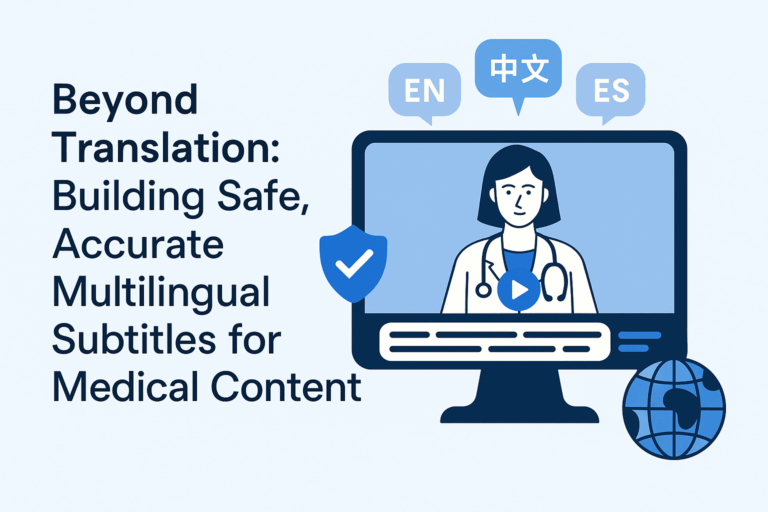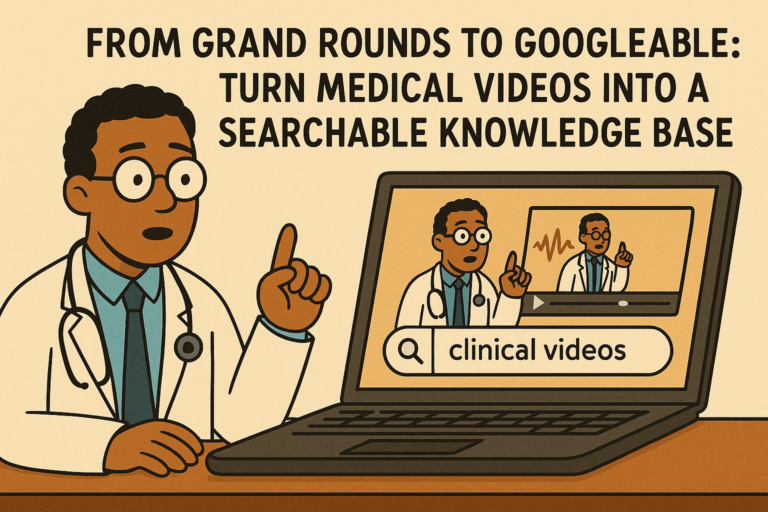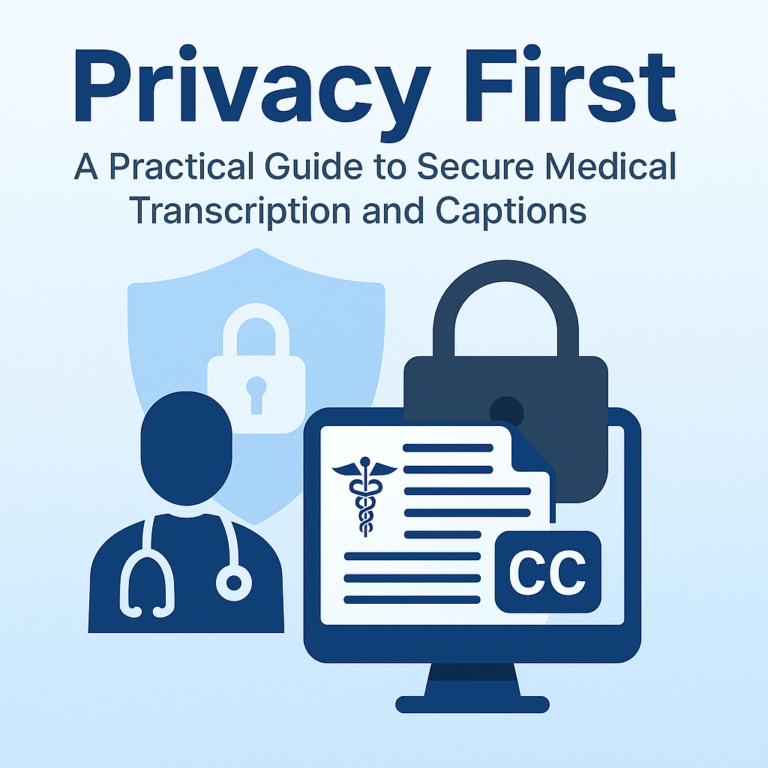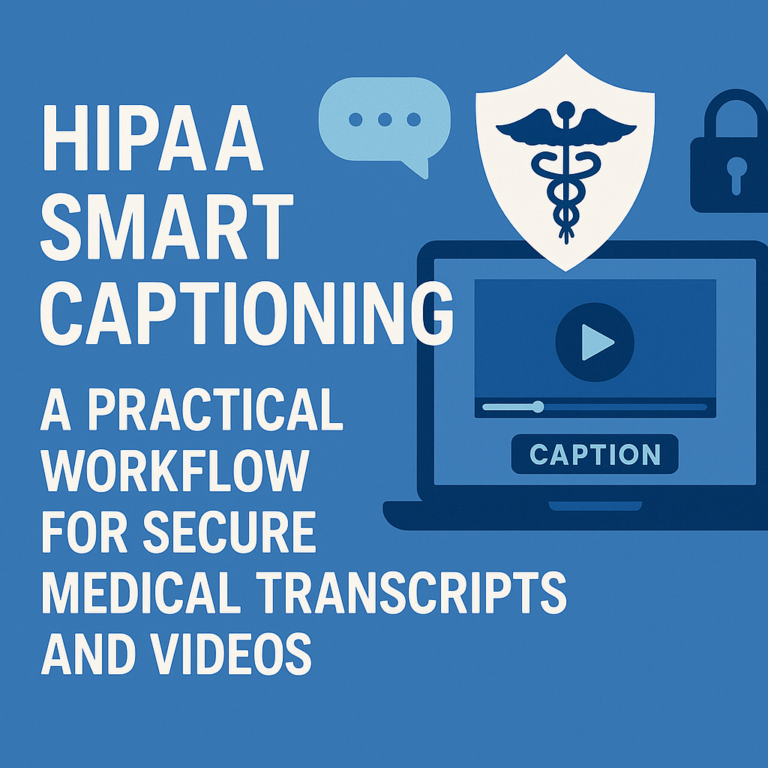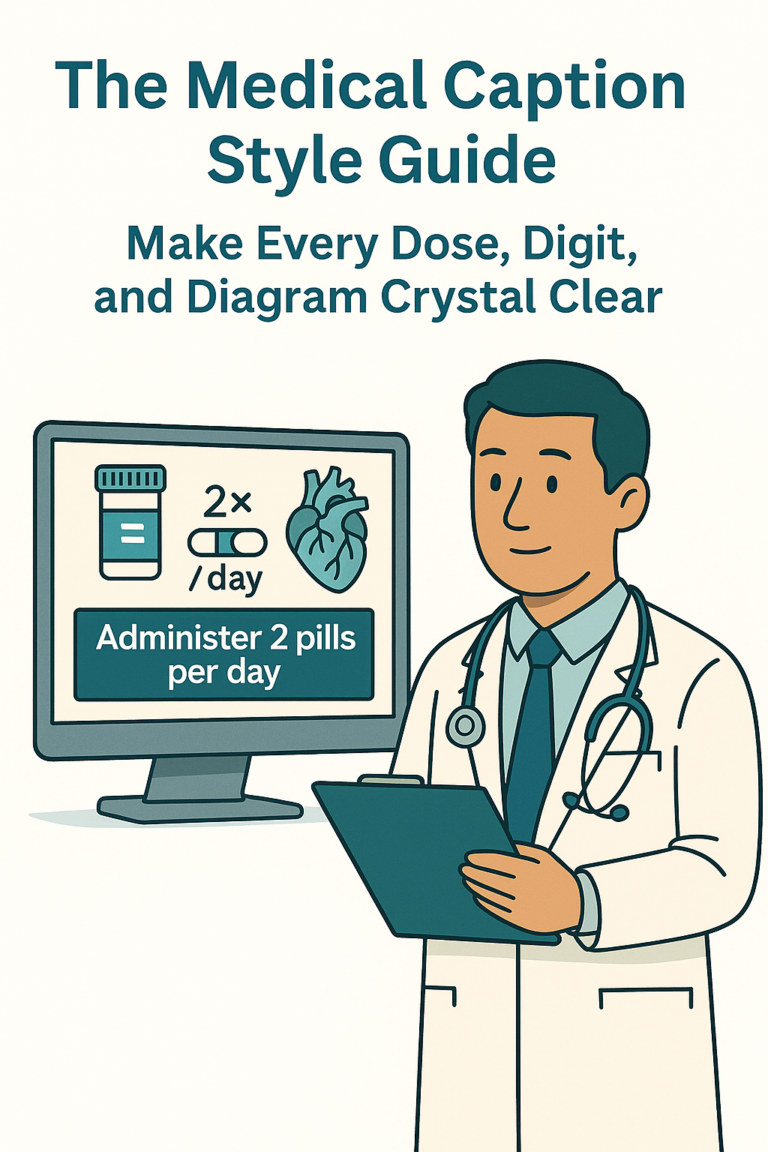If a caption turns “q.d.” into “q.i.d.,” that’s not a typo—it’s a safety risk. In medicine, words carry weight, and captions are no exception. Whether you’re subtitling a grand rounds video, a surgical demo, or a patient-education clip, the way you render language on-screen can improve comprehension—or invite confusion.
At MedXcribe, we see daily how clinically tuned transcription can elevate accuracy. But great captions don’t stop at accuracy; they also follow style choices that make complex content safe, readable, and teachable. Here’s a practical style guide you can use today.
Safety-first: choices that reduce clinical risk
1) Expand risky abbreviations: Avoid ambiguity. Prefer “once daily” over “q.d.,” “every other day” over “q.o.d.,” and expand “U” to “units.” When in doubt, write it out.
2) Numerals and units: Use numerals for measurements and doses; keep a leading zero for decimals under 1 (0.5 mg, not .5 mg). Avoid trailing zeros (5 mg, not 5.0 mg). Include a space between number and unit (10 mL, 38 °C).
3) Med names: Prefer generic names on first mention when possible, with brand in parentheses if relevant. For sound-alike drugs (e.g., “hydralazine” vs “hydroxyzine”), include a brief clarifier in brackets: [antihypertensive] or [antihistamine].
4) Vital symbols and Greek letters: Spell them out unless visibly shown on-screen. Write “alpha-1 receptor” instead of “α1 receptor” in captions unless the symbol appears in the video and is essential to comprehension.
5) Time and frequency: Write time unambiguously (e.g., “08:30” or “8:30 a.m.”) and frequencies in words (“twice daily,” “every 6 hours”). Avoid slashes like “q6h” unless this is a specialist audience and the context is crystal clear.
6) Disfluencies and filler: Remove “um,” “uh,” and false starts unless they convey clinical uncertainty that matters. If a speaker corrects themselves from “15 mg” to “50 mg,” retain the correction clearly and optionally bracket the slip: “50 mg [corrected from ‘15’].”
Make it learnable: clarity for students and clinicians
7) First-use expansions: Expand terms on first use with parentheses: “acute kidney injury (AKI).” If the term drives comprehension, consider a brief plain-language gloss: “tamponade (pressure on the heart from fluid around it).”
8) Line breaks and rhythm: Keep captions within ~35–42 characters per line, 2 lines max. Break at logical phrase boundaries: “Start heparin after the CT // if there is no bleed.” Avoid splitting numbers or drug names across lines.
9) Pace and density: Aim for 140–180 words per minute. Dense content? Consider more frequent, shorter captions. Don’t force all words into fast sections—prioritize clinical meaning over verbatim filler.
10) Non-speech cues: Use brackets for meaningful sounds: [heart monitor beeping], [laughter], [door opens], [ultrasound tone increases]. In teaching videos, non-speech cues can orient learners without distracting them.
11) On-screen text and diagrams: If slides show key terms or values, ensure captions don’t obscure them. Place captions away from labels or use a single line when necessary. If the on-screen text is crucial and not spoken, briefly capture it: “[Slide: CHA2DS2-VASc score thresholds].”
12) Speaker labels and roles: In multi-speaker clinical content, label by role when names aren’t consistently introduced: Dr. Chen:, Nurse Patel:, Pharmacist:. For panels or case discussions, consistent labels prevent misattribution of orders or opinions.
A simple workflow you can repeat
Prep your audio: Good microphones reduce later editing. Encourage speakers to state dosages, units, and drug names clearly, and to expand abbreviations on first mention.
Transcribe with a medically tuned engine: Use a tool trained on clinical language to minimize mishears of anatomy, drugs, and procedures. MedXcribe is fine-tuned on medical data to produce highly accurate transcripts and captions.
Apply the style pass: Review the transcript specifically for safety items—abbreviations, numbers, doses, and units—then for readability—line breaks, timing, and clarifications. Keep a checklist based on the 12 rules above.
Standardize with a team style sheet: Create a one-page style reference for your department or course (e.g., “always expand dosing abbreviations,” “use generic drug names,” “place non-speech cues in brackets”). Consistency speeds reviews and helps new team members.
Protect privacy: De-identify patient information in educational content unless you have explicit consent. If a case presentation includes PHI, either redact it in captions or blur/bleep in the media and note [redacted] in the caption.
Version and archive: Save a clean transcript and the final caption file (e.g., SRT, VTT) with version numbers and dates. This is invaluable for CME accreditation, institutional repositories, and quick updates when guidelines change.
A quick story from the field
During a cardiology teaching session, a resident reviewing captions caught “2.5 mg warfarin daily” where the speaker had actually said “5 mg daily.” The miscaption was flagged during the style pass and fixed before the video went live. It wasn’t a software error; it was background noise and an imprecise original recording. The team’s checklist—numbers, units, doses—saved the day. Processes protect people.
The takeaway
Great medical captions are more than words on the screen—they’re clinical communication. Follow the 12 rules to reduce risk, increase clarity, and make your videos truly teachable. Ready to put this into practice? Upload your next lecture, case review, or patient-education video to MedXcribe, then run a focused style pass using the checklist above. If your team wants a shared style sheet template, reach out—we’re happy to help you get started.

